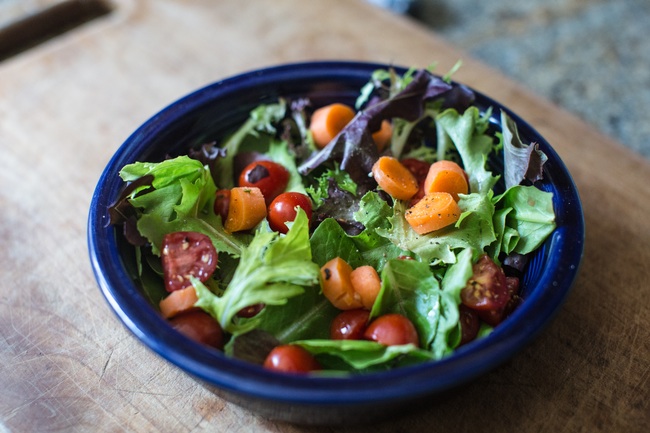This summer I upended my life in Boston and settled in Denver, CO. Although there are plenty of cultural differences between Beantown and Rocky Mountain Central, immediately evident was the beautiful weather and high presence of outdoor activities- hiking, picnicking, patio dining, poolside lounging, etc…, which equate to a flourishing industry of farmers markets.
Throughout the drive across country, I mentally checked off the recipes I’ll be able to make with my fresh produce & veggies. Interestingly, I realized that each of these healthy, all-natural, and fresh dishes contains the vitamin folate. But what is the significance of folate? How does it help us function? And which foods can we find it in? In this edition, I provide you with folate-rich recipes that will leave the taste of summer in your mouth and a satiated feeling in your belly.

From the class of water-soluble B vitamins emerges folate, named such from the Italian word for foliage (e.g. dark leafy greens). Other food sources also exist; fruits, mushrooms, nuts, and beans to name a few. Folate is critical to growth and development, as its presence is required for synthesis of DNA and other genetic material. 1 This essential role is amplified among pregnant mothers who require substantial amounts of the nutrient to decrease their babies’ risk for spina bifida, a severe neural tube defect. 2 Consuming folate in conjunction with the other B-vitamins, including thiamine, niacin, riboflavin and B12, has been shown to help to maximize its absorption and effectiveness. And although overt folate deficiency in the United States is uncommon, it can cause megaloblastic anemia, sores on the tongue and mouth, and color changes on the fingernails, hair, or skin.
An oxidized form of the vitamin, folic acid, is synthetically made and is used to fortify foods such as cereal and grains. However, folate and folic acid have distinct metabolic pathways; additionally, folic acid has been implicated in disease and poor nutrient interactions. 3, 4 Thus in my desire to get off to a healthy start in my new town, the following recipes are rich in naturally-occurring folate but do not contain added folic acid.
-
Broccoli Slaw. Don’t know what to do with broccoli stalks after your family picks away the florets? Now you do! The stalks are equally rich in nutrients as the florets, and this recipe can be paired nicely with a floret-containing entree.
-
Basic Pinto Beans. An easy and classic Southern recipe from Nourishing Traditions. This delicious pinto base cleverly utilizes one of the highest folate-containing beans.
-
Coco-Nutty Granola. I love this recipe because nuts are a great source of both folate and omega-3 fatty acids. On top of that, it is fresh and tasty; a perfect snack to complement a sweaty morning workout.
-
Spinach and Avocado Salad with Garlic Mustard Vinaigrette. This salad is like a home run in that both raw baby spinach and avocado are loaded in folate. Pair them together with a tangy vinaigrette for a light and tasty patio treat!
-
Seared Tuna with Mango Salsa. Nothing screams summer like fresh fish and tropical fruit! Mango and oranges contain the highest folate levels of all fruits, so the addition of ⅓ cup fresh squeezed orange juice in the salsa makes a killer combo. You may opt to swap the brown sugar for a nutrient-dense sweetener like coconut sugar or leave it out altogether.
Which of these dishes did you try? Let me know your favorite folate-rich recipes in the comment section!
Carlie Frydman is a high school Biology teacher and writer in Denver, CO. She discovered her love for nutritional science and exercise when she began running, and now coaches varsity track and cross country. In her free time, Carlie can be found in her kitchen trying a funky new cheese recipe, or soaking up the sun at the nearest body of water.
